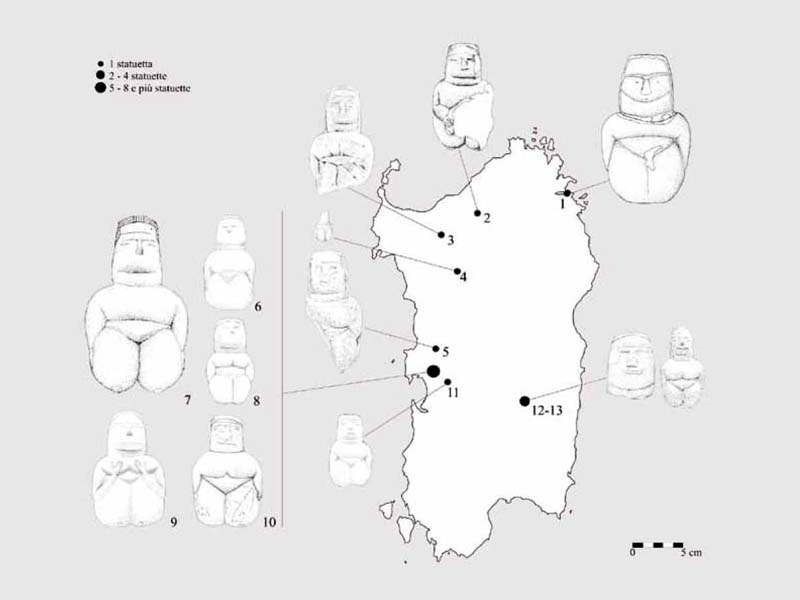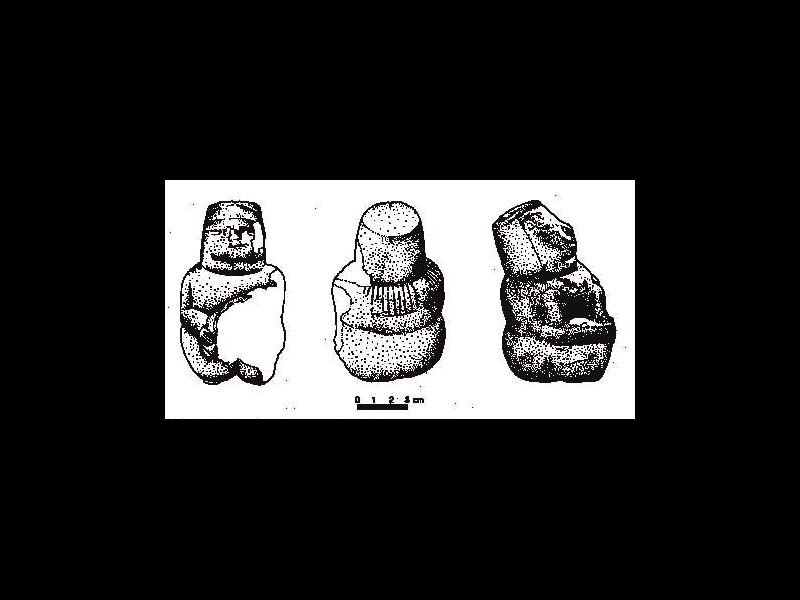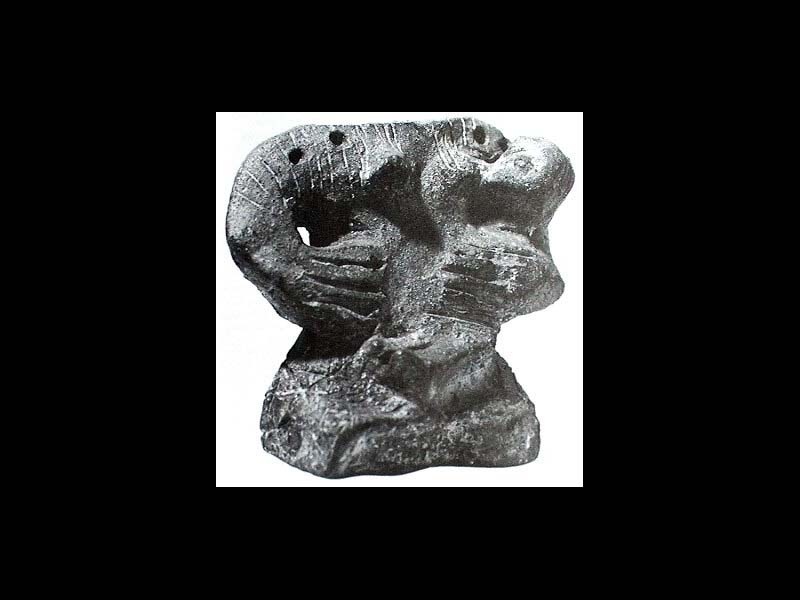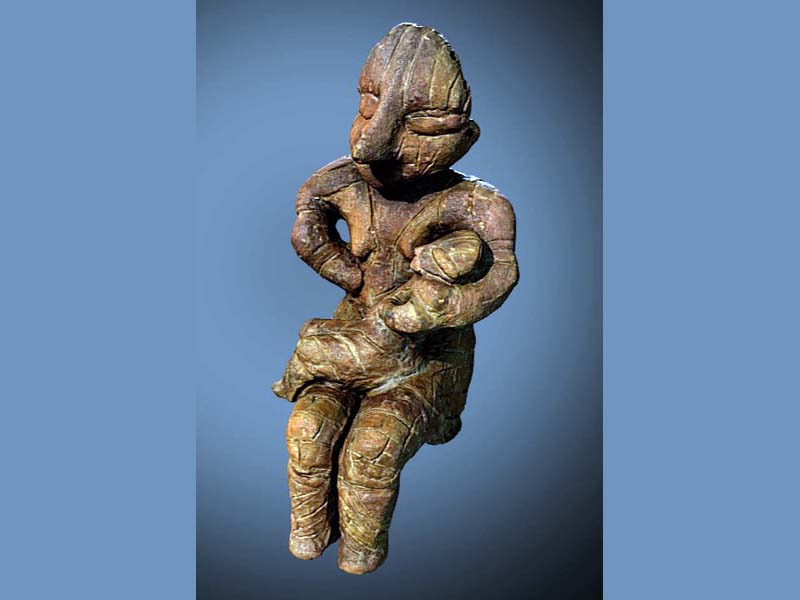The statuette, found by a farmer who was plowing a field in the Perfugas area (Sassari), is mutilated by the very child that the female figure was holding to her chest and whose presence can be recognized from some traces.
It is an example of a female statuette of "geometric-volumetric" style about 11 cm high. and inserted by Lilliu (1999) in the period called "Bonu Ighinu" (IV millennium BC). The material with which it was carved is marl (a type of sedimentary rock) with a hammering and engraving technique which ends with a final smoothing (Moravetti 2017).
This statuette represents a unicum in the Sardinian Neolithic panorama so much so that today it is the only example in a volumetric style with a child, a figurative scheme that will be taken up a few millennia later by some bronze statuettes from the Nuragic period depicting female figures with children.
The statuette, for the rest, takes up the usual compositional scheme which presents a cylindrical head surmounted by a sort of veil-headdress identified by Lilliu (1999) as a poles from which, on the back, descending towards the shoulders, a series of knurled incisions develop that recall the hairstyle that can also be admired in the statue of Cuccuru s'Arriu of tomb 386 and in the others identified in thehypogeum.
The face has the usual T-pattern (oblong eyes and close brows) with a well-defined nose and lips. The arms are outstretched towards the infant, the hands well outlined (comb stylization), the thighs and buttocks well rounded and the feet outlined schematically, typical elements of this style, with the exception of the presence of the child.
According to Lilliu (1999) this figurine represents a Goddess, depicted as kourotrophos or nurse and has parallels with statuettes from the Mediterranean, Balkan, Helladic, Danubian and Asian areas of the coeval period. The stylistically closest example would be the “Our Lady of Gradac”, culture of Vinca, Valle Morava of 5000 BC whose child is suckled with the right breast (in the case of Perfugas instead it is the left). Gimbutas (2008) among other things underlines the fact that “the parallel lines carved on the breasts and shoulders suggest the presence of the milk that gives life.” Continuing along this line, another specimen comparable to the Perfugas statuette is the Bird Goddess of Drenovac (culture of Vinca, 5000 BC. C.). According to Gimbutas (2008)"the image of a woman with a bird mask and large pendulous breasts emerges in the Upper Paleolithic” and persists until the Neolithic with numerous specimens. This deity is often found represented with marked engravings in the shape of V, X, parallel lines, zigzags and meanders that symbolize "the divine Source of nourishment-milk/rain o Giver of Life in general(Gimbutas 2008; see also Gimbutas 2005). The reason why this animal was used, according to the archaeologist, can be explained by the cosmogonies (mythologies that tell the origin of the universe), present in various cultures around the world, in which it is told how the cosmos was originated from an egg. In this context, therefore, the bird's egg acquires a strong symbolic meaning.
Inside the town (Perfugas) there is also a fine example of a structure from the Nuragic era which bears witness to the cult of water: Sacred well of Predio Canopoli. Although not directly connected with the statuette, it nevertheless testifies to an area in which cults linked to fertility were certainly practiced for several millennia. Note that next to the monument, in a very similar way to what happened at the nuragic site of Santa Cristina di Paulilatino and Santa Vittoria of Serri, one was built church entitled to Santa Maria degli Angeli. A further example of religious continuity and syncretism (or appropriation by the Church?) pertaining to the sphere of the feminine. For more details on the values of this cult, see the article on Well of Santa Cristina.






Historical notes
The chance discovery took place in 1975 in the field of a farmer from Perfugas, Gavino Muraglia, who (probably) accidentally damaged the statuette with a plough. The missing part of the rest, despite searches, has never been found.
CARD
LATEST PUBLISHED TEXTS
VISIT THE FACTSHEETS BY OBJECT

